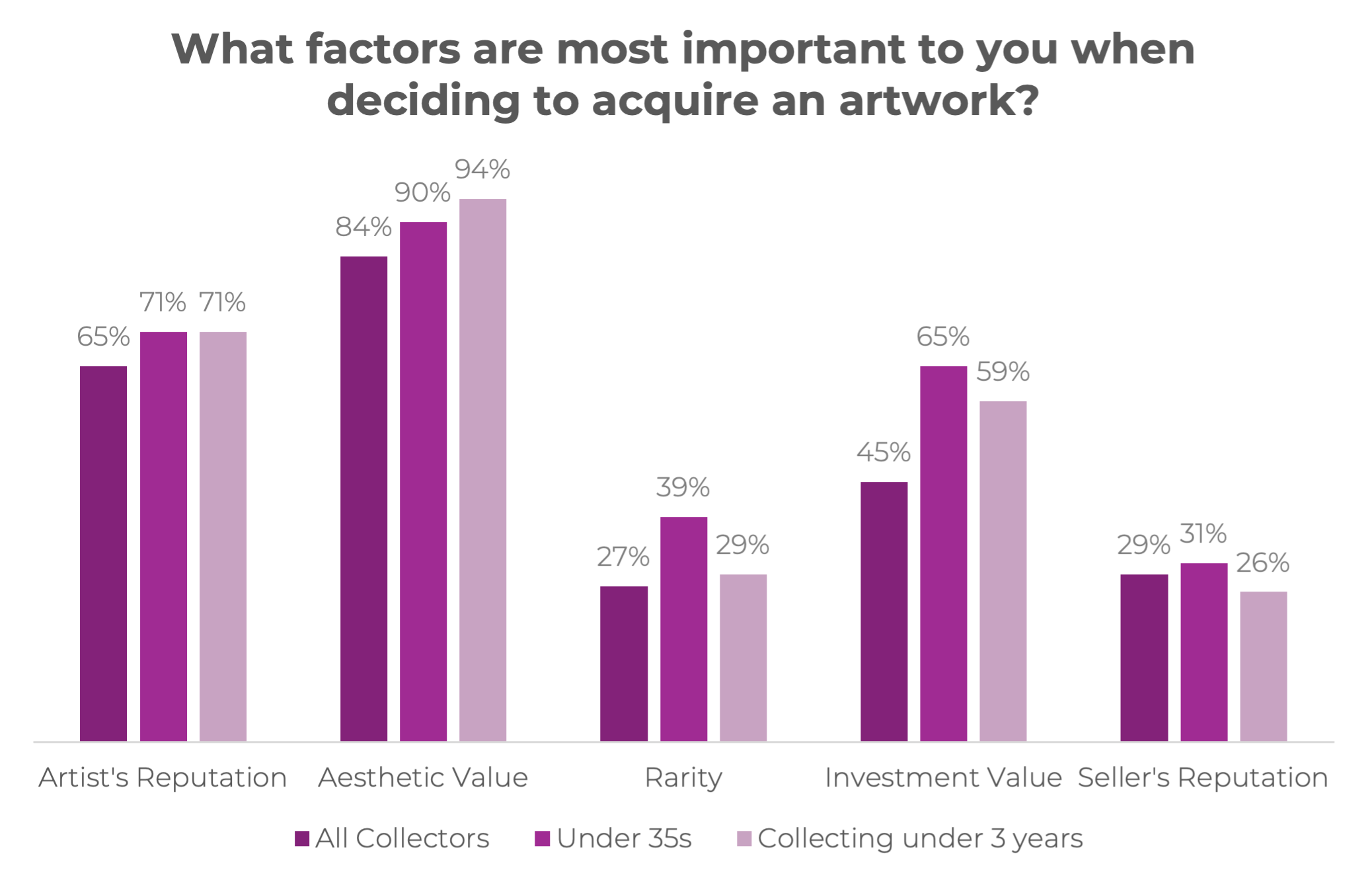Why Print: An Entry Point for the Data Hungry New Collector
Lindsay Dewar, COO & Head of Analytics, ArtTactic
Print is one of the most intriguing sectors of the art market. Marking its resilience and innovation, the print market continues to grow in volume, exemplifying the virtues often lauded as key to reinvigorating and refreshing the industry as a whole: attracting new, young investment focused collectors, accessibility of both price points and availability, and innovative methods of both making and selling.
The print market has resisted much of the well documented slowing affecting the trophy-lot end of the market. In the first half of this year several key areas of the market are growing. Online-Only auctions and sales of artworks under $50k both experienced jumps in both the number of artworks sold and the value of those pieces. This highlights that better curated sales, lower price points and improved user experiences are helping to connect collectors with the artworks they want to buy. ArtTactic’s Art Buyer Survey 2024 shows that 53% of collectors buy prints, a figure that rises to 62% for young collectors (under 35 years old). This is reflected in the auction market for prints, which increased by 9.4% in the first half of 2024 - the most sold lots in any 6-month period since 2015.
Prints are rightly regarded as an accessible route into the art market and collecting. Collectors across the board value aesthetic value and the artist’s reputation most highly in their collections, with an eye toward their investment potential, and prints offer a level of additional data that give a deeper insight into any purchase.
Prints’ rich additional market data (specifically editions compared to unique pieces) offer new collectors assurance both of their own taste, and investment value.
This in turn translates into a growing confidenceand maturity which can be utilised across the market as a whole. With the ability to analyse the print’s performance across its entire edition (with the obvious caveats about provenance and condition, as well as more general market forces at the time of sale), prints offer additional data, which collectors can use to assess their own taste and their future investments performance. This extra layer of data allows investment focused collectors to track their piece and make more sophisticated predictions about its potential return on investment (ArtTactic specialise in this kind of bespoke research).In terms of taste, knowing when acquiring art. Prints satisfy this drive every bit as well as unique pieces, while providing a more accessible entry point, especially to new and young collectors. While prints’ relatively lower price point is a large part of this accessibility, it is no longer the full story, as art acquisition is increasingly viewed as a commodity as well as joy to own. Young collectors especially view that 10 (or 3, or 500) other people also want to own this piece and how much they paid for it can be a hugeconfidence boost in an intimidating market place that does not always welcome newcomers. who else bought this print? Do I admire them?
Prints provide a sense of connection and belonging among collectors that unique pieces may not, helping to lower the perceived barriers of entry in the art market, which can often feel impenetrable and inaccessible to newcomers. This wealth of additional data, along with its role in attracting new collectors, are key factors in the print market's sustained popularity and resilience. The prevailing industry view - expressed, for instance, at Deloitte’s annual Art & Finance conference - is that emerging collectors entering the market are drawn to innovative selling methods, sustainability, and fresh perspectives on artwork. The print market meets these demands while also appealing to more traditional collectors - an impressive accomplishment in such an unpredictable industry, pointing to a promising path forward.


